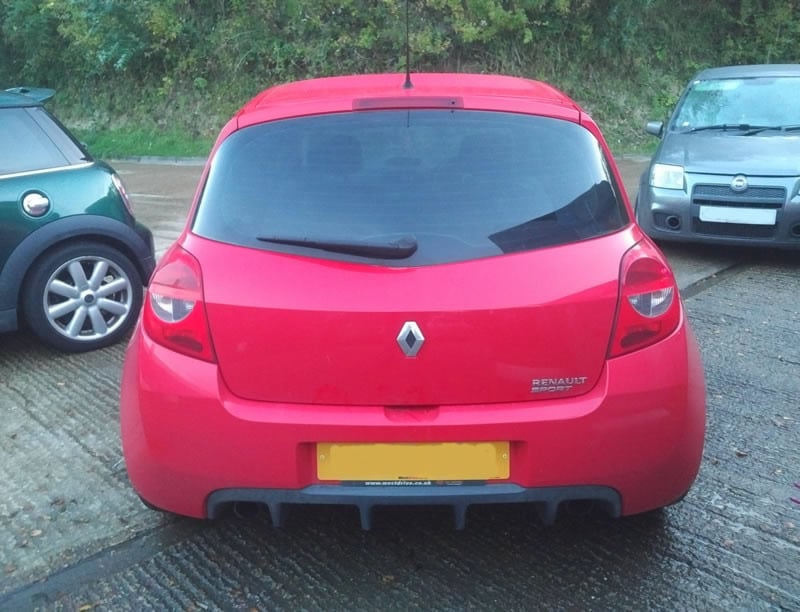Renault Clio RS197 in for Corner Weighting, Wheel Alignment and new Spindles

This Renault Clio RS197 came in for a few bits. Namely replacing the hub swivels.
This is not a job for the faint of heart. The book time is nigh on 6 hours, these were a real pain and required the hub carrier on the bench, heat, persuasion and a lot of determination.
So whilst they are a royal pain in the arse to work on - let's look at why the design is superior.
These Clios have a specially designed MacPherson strut suspension which isolates the steering axis from the wheel movement.
This isn't the same as the BMW system where there are two lower ball joints - this is more sophisticated as the hub itself turns independently of the top mount.
This gives a number of benefits:
Improved Steering Precision
The dual-axis strut design isolates the steering axis from the strut's vertical movement. This helps improve steering precision, allowing for more accurate and responsive control of the front wheels, especially during aggressive cornering and rapid changes in direction.
Reduced Torque Steer
Performance-oriented front-wheel-drive cars like the Clio RS197 can experience torque steer, where the engine's torque causes the steering wheel to pull to one side during hard acceleration. The dual-axis strut design helps minimise this effect, by reducing the distance between the hub mounting point and the steering axis.
The hub carrier on this car was covered in CV grease owing to a failed CV boot clip...of course we cleaned this up and fixed the boot clip.

Enhanced Handling
By separating the steering and suspension functions, the dual-axis MacPherson strut design can contribute to improved handling and stability. It can help maintain better tire contact with the road, resulting in more predictable and controlled behaviour when pushing the car to its limits.
Cornering Performance
This design can also reduce the impact of bump steer, which is the unwanted steering movement that can occur when one wheel hits a bump or uneven road surface. This is particularly important for maintaining stability and control while cornering.
We set up the corner weight to 50% cross weight and set the camber (it had adjustable top mounts) and the front toe. The car felt brilliant when finished with a hybrid set up between track use and road.










